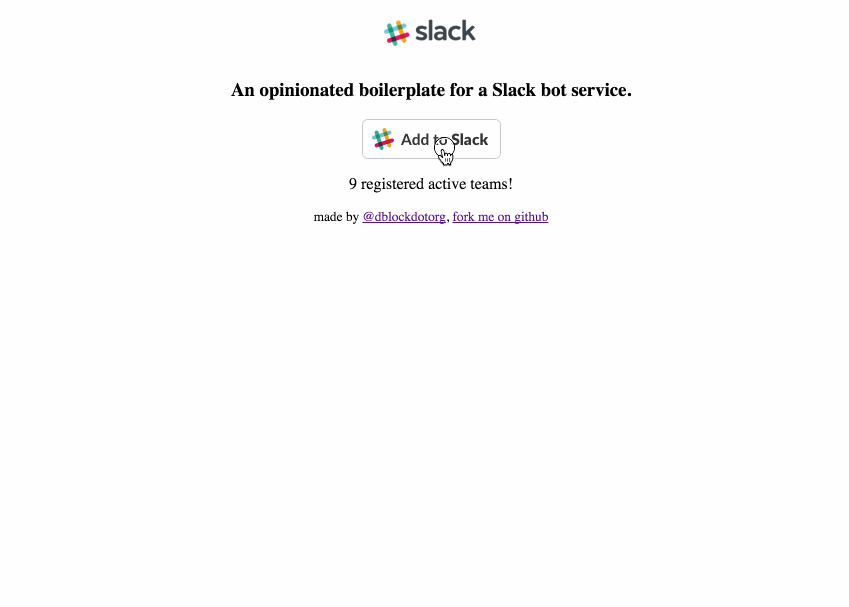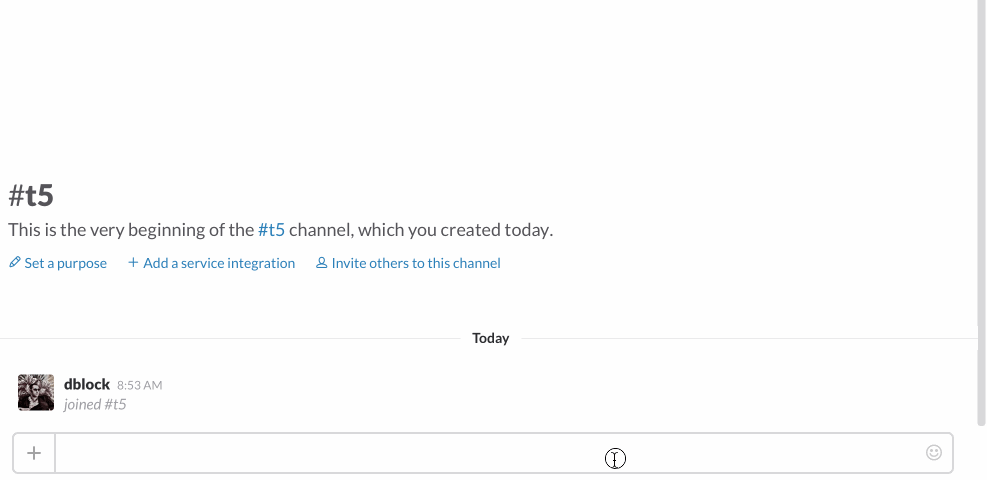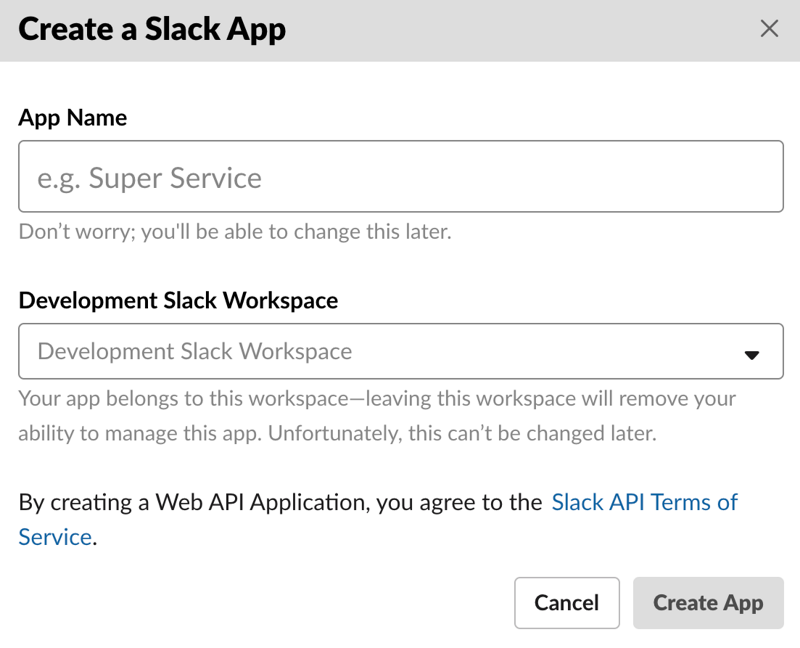Build a complete Slack bot service with Slack button integration, in Ruby.
If you are not familiar with Slack bots or Slack API concepts, you might want to watch this video.
A good open-source demo of a service built on top of this library is Strava integration with Slack.
- What is this?
- Stable Release
- Try Me
- Run Your Own
- MongoDB
- ActiveRecord
- Usage
- OAuth Code Grant
- API
- HTML Templates
- Access Tokens
- Example Bots Using Slack Ruby Bot Server
- Copyright & License
A library that contains a Grape API serving a Slack Ruby Bot to multiple teams. This gem combines a web server, a RESTful API and multiple instances of slack-ruby-bot. It integrates with the Slack Platform API. Your customers can use a Slack button to install the bot.
You're reading the documentation for the next release of slack-ruby-bot-server. Please see the documentation for the last stable release, v0.12.0 unless you're integrating with HEAD. See UPGRADING when upgrading from an older version.
A demo version of the sample app with mongoid is running on Heroku at slack-ruby-bot-server.herokuapp.com. Use the Add to Slack button. The bot will join your team as @slackbotserver.
Once a bot is registered, you can invite to a channel with /invite @slackbotserver interact with it. DM "hi" to it, or say "@slackbotserver hi".
You can use one of the sample applications to bootstrap your project and start adding slack command handlers on top of this code. A database is required to store teams.
Use MongoDB with Mongoid as ODM. Configure the database connection in mongoid.yml. Add the mongoid gem in your Gemfile.
gem 'mongoid'
gem 'kaminari-mongoid'
gem 'mongoid-scroll'
gem 'slack-ruby-bot-server'
See the sample app using Mongoid for more information.
Use ActiveRecord with, for example, PostgreSQL via pg. Configure the database connection in postgresql.yml. Add the activerecord, pg, otr-activerecord and cursor_pagination gems to your Gemfile.
gem 'pg'
gem 'activerecord', require: 'active_record'
gem 'slack-ruby-bot-server'
gem 'otr-activerecord'
gem 'cursor_pagination'
See the sample app using ActiveRecord for more information.
Start with one of the samples above, which contain a couple of custom commands, necessary dependencies and tests, then create a new Slack App.
Follow Slack's instructions, note the app client ID and secret, give the bot a default name, etc. The redirect URL should be the location of your app. For local testing purposes use a public tunneling service such as ngrok to expose local port 9292.
Within your application, edit your .env file and add SLACK_CLIENT_ID=... and SLACK_CLIENT_SECRET=... in it.
Run bundle install and foreman start to boot the app. Navigate to localhost:9292. You should see an "Add to Slack" button. Use it to install the app into your own Slack team.
The "Add to Slack" button uses the standard OAuth code grant flow as described in the Slack docs.
The button itself contains a link that looks like this:
https://slack.com/oauth/authorize?scope=bot&client_id=<%= ENV['SLACK_CLIENT_ID'] %>
Once clicked, the user is taken through the authorization process at Slack's site. Upon successful completion, a callback containing a temporary code is sent to the redirect URL you specified. The endpoint at that URL contains code that looks like this:
# Instantiate a web client
client = Slack::Web::Client.new
# Request a token using the temporary code
rc = client.oauth_access(
client_id: ENV['SLACK_CLIENT_ID'],
client_secret: ENV['SLACK_CLIENT_SECRET'],
code: params[:code]
)
# Pluck the token from the response
token = rc['bot']['bot_access_token']The token is stored in persistent storage and used each time a Slack client is instantiated for the specific team.
This library implements an app, SlackRubyBotServer::App, a service manager, SlackRubyBotServer::Service that creates multiple instances of a bot server class, SlackRubyBotServer::Server, one per team. It also provides default HTML templates and JS scripts for Slack integration.
The app instance checks for a working database connection, ensures indexes, performs migrations, sets up bot aliases and log levels. You can introduce custom behavior into the app lifecycle by subclassing SlackRubyBotServer::App and creating an instance of the child class in config.ru.
class MyApp < SlackRubyBotServer::App
def prepare!
super
deactivate_sleepy_teams!
end
private
def deactivate_sleepy_teams!
Team.active.each do |team|
next unless team.sleepy?
team.deactivate!
end
end
endMyApp.instance.prepare!You can introduce custom behavior into the service lifecycle via callbacks. This can be useful when new team has been registered via the API or a team has been deactivated from Slack.
instance = SlackRubyBotServer::Service.instance
instance.on :started, :stopped do |team|
# team has been started or stopped
end
instance.on :created do |team, error, options|
# a new team has been registered
end
instance.on :deactivated do |team, error, options|
# an existing team has been deactivated in Slack
end
instance.on :error do |team, error, options|
# an error has occurred
endThe following callbacks are supported. All callbacks receive a team, except error, which receives a StandardError object.
| callback | description |
|---|---|
| error | an error has occurred |
| creating | a new team is being registered |
| created | a new team has been registered |
| booting | the service is starting and is connecting a team to Slack |
| booted | the service is starting and has connected a team to Slack |
| stopping | the service is about to disconnect a team from Slack |
| stopped | the service has disconnected a team from Slack |
| starting | the service is (re)connecting a team to Slack |
| started | the service has (re)connected a team to Slack |
| deactivating | a team is being deactivated |
| deactivated | a team has been deactivated |
The Add to Slack button also allows for an optional state parameter that will be returned on completion of the request. The creating and created callbacks include an options hash where this value can be accessed (to check for forgery attacks for instance).
auth = OpenSSL::HMAC.hexdigest("SHA256", "key", "data")<a href="https://slack.com/oauth/authorize?scope=bot&client_id=<%= ENV['SLACK_CLIENT_ID'] %>&state=#{auth)"> ... </a>instance = SlackRubyBotServer::Service.instance
instance.on :creating do |team, error, options|
raise "Unauthorized response" unless options[:state] == auth
endYou can introduce custom behavior into the service lifecycle on a timer. For example, check whether a team's trial has expired, or periodically cleanup data.
Note that unlike callbacks, timers are global for the entire service.
instance = SlackRubyBotServer::Service.instance
instance.every :hour do
Team.each do |team|
begin
# do something with every team once an hour
rescue StandardError
end
end
end
instance.every :minute do
# called every minute
end
instance.every :second do
# called every second
end
instance.every 30 do
# called every 30 seconds
endA number of extensions use service manager callbacks and service timers to implement useful functionality.
- slack-ruby-bot-server-mailchimp: Subscribes new bot users to a Mailchimp mailing list.
- slack-ruby-bot-server-stripe: Enables paid bots with trial periods and commerce through Stripe.
You can override the server class to handle additional events, and configure the service to use it.
class MyServer < SlackRubyBotServer::Server
on :hello do |client, data|
# connected to Slack
end
on :channel_joined do |client, data|
# the bot joined a channel in data.channel['id']
end
end
SlackRubyBotServer.configure do |config|
config.server_class = MyServer
endYou can override the service class to handle additional methods.
class MyService < SlackRubyBotServer::Service
def url
'https://www.example.com'
end
end
SlackRubyBotServer.configure do |config|
config.service_class = MyService
end
SlackRubyBotServer::Service.instance # MyService
SlackRubyBotServer::Service.instance.url # https://www.example.comThis library provides a default HTML template and JS scripts that implement the "Add to Slack" button workflow. Customize your pages by adding a public directory in your application and starting with a index.html.erb template. The application's views and public folders are loaded by default.
You can add to or override template paths as follows.
SlackRubyBotServer.configure do |config|
config.view_paths << File.expand_path(File.join(__dir__, 'public'))
endBy default the implementation of Team stores a bot_access_token as token that grants a certain amount of privileges to the bot user as described in Slack OAuth Docs along with activated_user_access_token that represents the token of the installing user. You may not want a bot user at all, or may require different auth scopes, such as users.profile:read to access user profile information via Slack::Web::Client#users_profile_get. To change required scopes make the following changes.
- Configure your app to require additional scopes in Slack API under OAuth, Permissions
- Change the Add to Slack buttons to require the additional scope, eg.
https://slack.com/oauth/authorize?scope=bot,users.profile:read&client_id=... - The access token with the requested scopes will be stored as
activated_user_access_token.
You can see a sample implementation in slack-sup#3a497b.
- slack-ruby-bot-server-sample, a generic sample
- slack-sup, see sup.playplay.io
- slack-gamebot, see www.playplay.io
- slack-market, see market.playplay.io
- slack-shellbot, see shell.playplay.io
- slack-api-explorer, see api-explorer.playplay.io
- slack-strava, see slava.playplay.io
- slack-arena, see arena.playplay.io
Copyright Daniel Doubrovkine and Contributors, 2015-2020


